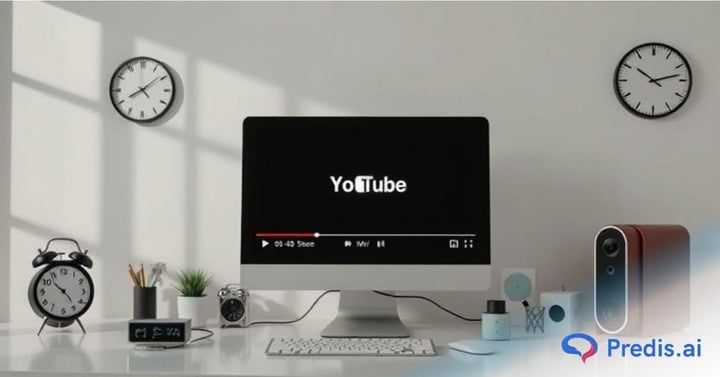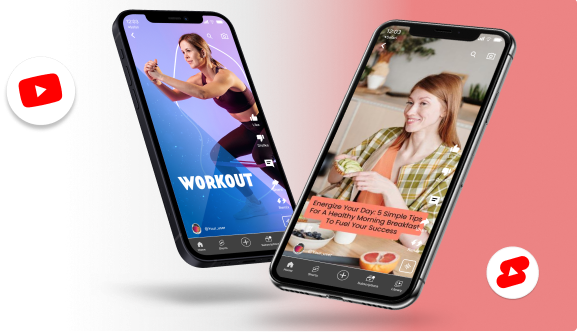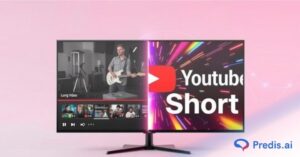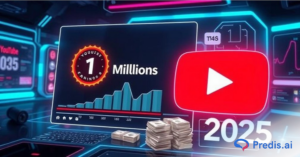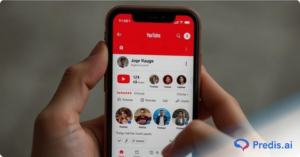YouTube brings in a massive amount of audience every single day. Whether you want to know how to do a math problem or get a quick dopamine fix, YouTube is the first thing you search for. It is a goldmine for viewers and a competitive landscape for creators. Each day, creators optimize their videos a little bit more to rank better on YouTube searches. If you are such a creator, let me ask you this: Do you ever wonder what the optimal YouTube title length is?
In this guide, we will do an in-depth analysis of how to create YouTube titles that grab attention. So, let us begin!
Why Is YouTube Title Length A Big Thing?
Did you know that YouTube is the second-largest search engine after Google? Interesting, right? People enter the platform in swarms, asking their queries and hoping for answers.
And what do they find? Titles and thumbnails! If your title does not pique their interest, then they won’t click on your video. And no matter how good your content is, it is unfortunately the titles and the thumbnails that are deciding your fate.
It is high time we take YouTube titles seriously and craft them perfectly, so let us figure out how to do it!
What Is The Optimal YouTube Title Length?
The optimal YouTube title length is 60 characters. Anything more than that, and your YouTube title will get truncated on different devices. And since people watch YouTube on different devices such as TVs, mobiles, and tablets, truncation is an issue that you want to avoid at all costs.
But why is truncation such a big issue? Because when a title is truncated, it does not convey the whole message to the reader. Viewers might not even completely understand what you are talking about because a quarter of your title is replaced by ‘…’. This will ultimately impact your CTR. And honestly, it is not a good look for your brand either!
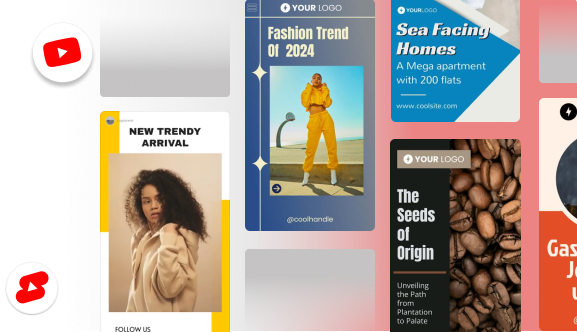
Why Most YouTube Titles Fail And How Not To Be One of Them?
Writing YouTube Titles within 60 characters is only the tip of the iceberg. Making them enticing and click-worthy is the ultimate goal here. And most YouTube titles fail in achieving that. To avoid falling into that category, here are some tips that you can follow:
1. Incorporate Keywords
The most important strategy when it comes to optimizing your video title is to add keywords strategically. To find keywords related to your video topic, you can:
- Check competitor video titles and find out the keywords that they are using.
- Google Keyword Planner is an excellent source that gives keyword options along with search volume and keyword difficulty. To find a well-performing, low-competitive keyword, pick one with low keyword difficulty and a moderate search volume.
2. Get to the point
When writing a title, place the important information and the keyword within the front part of the title. Since people watch YouTube from many different devices, sometimes your titles might get cut off. To get your point across, even when truncated, this is the only way.
Check out this example, where the keyword Shopify is placed in the front to help users understand the context immediately.

3. A/B Testing
Every audience is unique. What works for your audience might not work for someone else. So, take every advice with a grain of salt and test it out on your audience. Try capitalizing your keywords in one title, or add fewer keywords in another. Make small switches in your titles every now and then to figure out which works best for your audience.
4. Do not Clickbait
Clickbait-type titles can be addicting at first. The initial huge surge of viewers and your rising popularity can seem worthy at the time, but in the long run, they can damage your brand reputation. So, never attempt to mislead your audience.
5. Add Text Overlays in Thumbnails
Adding text in thumbnails is a great idea as well. This is a great way to convey your value proposition to the audience. Some creators even add their images as a way of branding their videos with thumbnails.
6. Communicate the Benefit
To make your viewers interested in your video, you need to tell them how the video will benefit them. Consider your title, the elevator pitch of your video. The clearer your offer is, the better your chances of your video getting noticed.

7. Create an emotion
When writing a title, think of the type of emotion that you want your video to evoke. Is it a sense of curiosity, wonder, or awe? Try to evoke that emotion with your title. Talking about the wonders of our universe? Start with an awe-inspiring title such as “10 Greatest Mysteries of the Universe”. Curiosity and excitement are very click-inducing emotions; use them in your copy.
Look at the following example, where the creator cleverly invokes a sense of FOMO in their readers and also makes them curious about what the other strategy is. Now, this is what we call a good emotion-evoking title.

8. Don’t go overboard
Yes, keywords are very important but no, don’t add only that to your titles. Remember, SEO is a delicate concept where you have to make the title engaging to your reader and also help YouTube categorize your video through keywords. So striking a balance between keywords and readability is extremely important.
9. Use Title Headline Analyzer
Assuming that you have come up with a title and want to check how clickable it is, then this tool is where you should go. Capitalize My Title is a tool that allows you to check how good your titles are, in terms of readability, SEO, and sentiment.
Run your titles through them to figure out how good your titles are. Here is how it grades the titles:
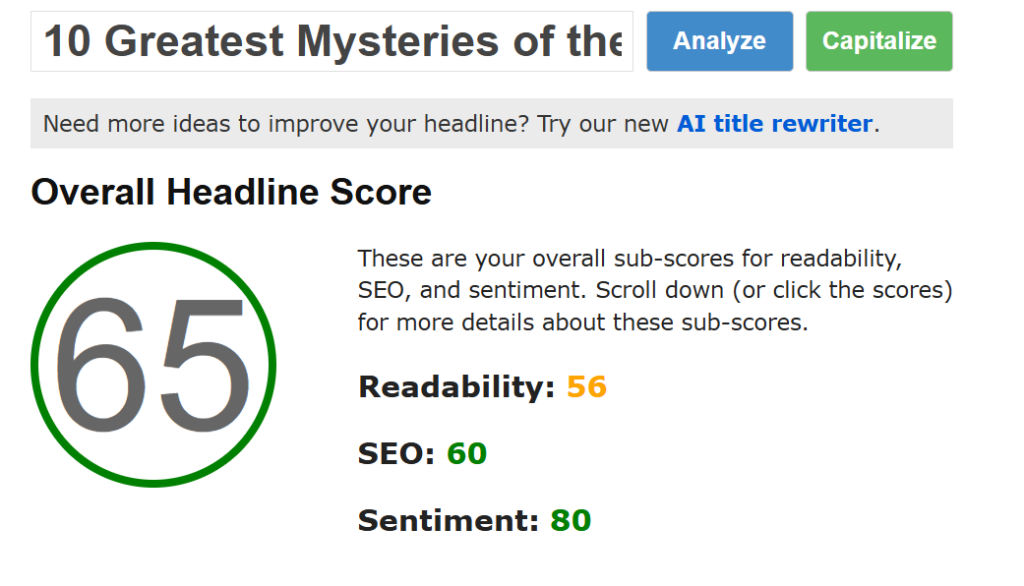
The tool also provides a detailed explanation on how you can improve your headline, which can be a great help.
10. Add hashtags
Hashtags are another great way that can help YouTube categorize your video better. You can use hashtags sparingly in your video description to improve your video visibility. Find popular hashtags with fewer posts in them and use them in your description. Or better yet, you can use your channel name as a hashtag for branding purposes.
Writing The Perfect YouTube Title
Writing a good YouTube title can be made easy with some diligent practice and A/B testing. But creating a video that can hook your audience from there and take them close to conversion is a tough journey.
Your video needs to be truly informative, engaging, and useful for the audience. Only then will they be willing to interact with you further. To achieve this, you need to master storytelling, beautiful visual design, and editing.
Or, you can get Predis AI to do that for you. Yes, with Predis AI, you can just write a detailed prompt and get a YouTube video generated from scratch. And it doesn’t stop there, you can then schedule them from the same platform and monitor their results as well.
The smart AI in this platform will analyze these results and then give suggestions to your posts, so you can make your future videos better. Sounds intriguing? Then, sign up and find out what else Predis AI can do for you.
FAQ:
An ideal YouTube title can be between 50-60 characters long. Anything higher than that can get truncated when viewed on different devices.
The maximum character length that is offered by YouTube is 100 characters.
The title length is important for the following reasons:
1. To avoid the title from getting cut short and losing context.
2. The loss in context could result in poor CTR.
3. Placing keywords at the beginning to get your video visible to search engines.


